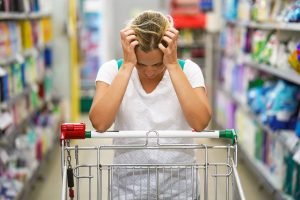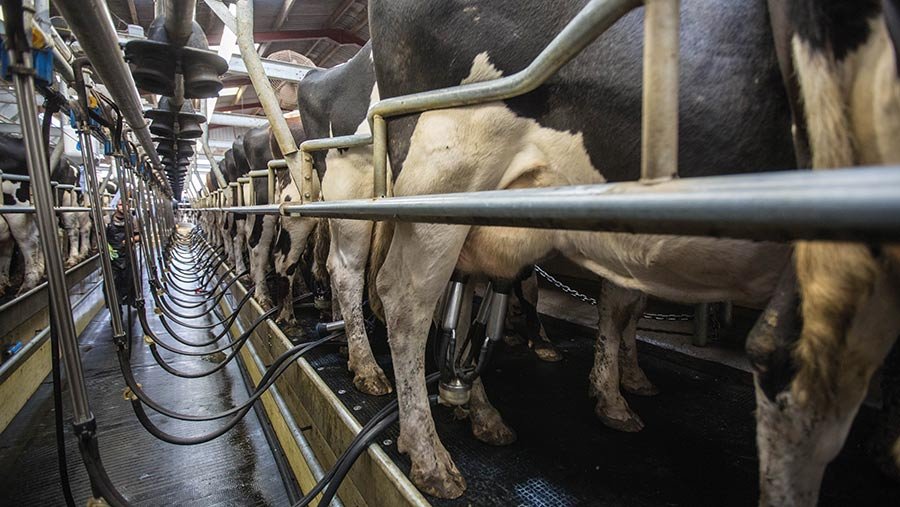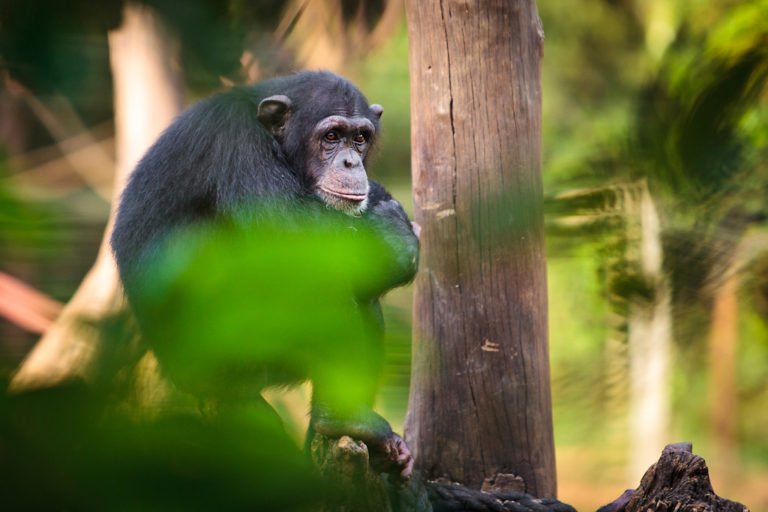So there’s a trend on TikTok where people are downloading an app that tells you if your food is good or bad — they proceed to scan everything in their house and then end up throwing away a bunch of food and skincare products because the app told them it’s all bad and unhealthy.
There are many variations of apps like this that rate food and/or skincare products using some type of rating system, usually colors and/or a 1-100 rating or something similar. All the user has to do is scan the barcode of a product and voilà, the app spits out some sort of rating and all of a sudden you think that everything in your house is toxic and trying to kill you.
So, what’s the deal with these apps? Are they evidence based? What’s behind the ratings and are they accurate?
The app that I’ve been seeing most recently is called Yuka. You download the free app, scan a product, and it spits out a dark green (excellent), light green (good), orange (poor), or red (bad) designation for the product along with a rating from 1-100. It also shows the additives in the product along with their ratings as well. The additive ratings are as follows: green (no risk), orange (moderate risk), yellow (limited risk), or red (hazardous).
Right away, I noticed that the rating designations for the additives don’t make any scientific sense. Green apparently means “no risk,” but there is risk that comes with literally everything we consume. Even water can present a risk at a large enough dose. Then we have orange, which is moderate risk, yellow, which is limited risk, and red, which is hazardous. This also doesn’t make sense because the calculation to determine risk is hazard times exposure. In order to know the risk that something poses, the exposure, or dose, is necessary. However, the app doesn’t base these ratings off of a dose, so there’d be no way to even understand risk without that information.
You can easily see how this scale isn’t scientific at all. So how can risk even be calculated for these additives without giving a dose? The answer is that it can’t!
I decided to try it out and scanned a box of Chewy Chocolate Chip Granola Bars, and no surprise, they are rated 16/100 and red “bad.” They contain three additives that are “limited risk” (calcium carbonate, sorbitol, and glycerol) and two that are “no risk” (tocopherol and lecithin). So, why the reason for such a bad rating? Well, it rated the calories orange because it’s “a bit too caloric” at 100 calories per bar, “a bit too fatty” at 1.5g of saturated fat per bar and “a bit too sweet” at 7g of sugar per bar. For whom? That’s always the question I wonder with these apps.
A 100 calorie granola bar that makes up a small part of an overall balanced diet is not “bad” as this app leads you to believe. Yet, we have people literally throwing out their food because this app told them it’s bad. It’s absolutely bonkers.
What’s even more bonkers is the products that it recommends for you instead — and this is where the appeal to nature fallacy comes in, which is what these ratings are largely based on. So, for this particular product, one of the recommended products that it gave me instead of the Chewy Chocolate Chip Granola Bars were the Simply Nature Chewy Chocolate Bars. These got a whopping 52/100 with a green “good” designation. That’s over three times the score that the Chewy granola bars got.
So, what’s the difference? First off, they’re organic, of course. The app gives it a green check because organic means “no synthetic herbicides.” Organic makes up 10 percent of the overall score on this app. This, despite the fact that natural does not mean safer than synthetic and also despite the fact that there is now quite a bit of data showing that organic food is no more nutritious that conventional. Once again, this is nothing but the appeal to nature fallacy. The “limited risk” additives bring the score down on the Chewy bars as well even though they are very safe additives, especially at the low amounts in this product.
The biggest differences between the two products is that the Chewy bars have 1.5g more fat per bar and the Simply Nature bars have 1g more sugar per bar. The fact that this results in such a large difference in the overall score is ridiculous. This is just one of many examples I could show to illustrate how utterly useless this app, and many others like it truly are. I also find it interesting how they list the “negatives” first for the Chewy bars and the “positives” first for the Simply Nature bars. Seems quite biased, doesn’t it?
Another example I addressed in a video was from someone who scanned their pita bread and then threw it away after finding out this app gave it a 48/100 “poor” rating. The app stated that it contains “additives to avoid” and rated one of the additives as “hazardous.” The rating scheme doesn’t allow for a product to get over 49 if any additive is deemed “hazardous,” so that is essentially the entire reason this product gets a “poor” rating.
Well, what is the “hazardous” additive? Disodium diphosphate, and this is a perfect example of how these apps don’t take dose into account whatsoever. This was given a “hazardous” designation because excess phosphorous in the diet can be harmful, but excess of any vitamin or mineral can be harmful, so with this reasoning, anything could be considered hazardous. If we actually take dose into account, we can deduce from the nutrition panel and ingredient declaration that there’s no more than 100mg of phosphorous per serving of pita bread. The recommended daily amount of phosphorous for an adult without kidney issues is 700mg to 1200mg per day. So, in one serving of pita bread, there is only 10 to 15 percent of the recommended daily amount of phosphorous.
There is phosphorous naturally present in many different foods. For example, a 3-ounce piece of salmon is going to have anywhere from 200mg to 300mg of phosphorous. A 1-ounce portion of Romano cheese contains around 200mg of phosphorous, but of course these apps would never call salmon or cheese “hazardous” due to the phosphorous content. The tolerable upper intake of phosphorous for a healthy adult is 4000mg per day. You’d get that amount from eating 40 pieces of this pita bread daily.


You can clearly see from these examples how the fact that these apps don’t take dose into account and weighting in favor of “natural” and “organic” when those designations tell you nothing about the safety or nutrition of a food, rendering these ratings useless. Not to mention that everyone has different nutritional needs, and nutritional needs can vary for the same person day to day.
At best, these apps are just wildly inaccurate, biased, and nonsensical. At worst, they can be very harmful not only due to the fact that they’re causing people to throw out perfectly safe foods, but also causing unnecessary fear regarding safe foods and additives, which can lead to disordered eating behaviors. More accessible, less expensive foods get rated lower than similar versions of products that are more expensive and less accessible. These apps are just another way to demonize more accessible foods, which causes the most harm to those are already struggling with food insecurity.
Nutrition is way too nuanced and individual for a color-coded rating scale to be accurate.
Final verdict: Do yourself a favor and delete these types of food apps for your own sanity and well being.
Food Science Babe is the pseudonym of an agvocate and writer who focuses specifically on the science behind our food. She has a degree in chemical engineering and has worked in the food industry for more than decade, both in the conventional and in the natural/organic sectors.
(function(d, s, id) {
var js, fjs = d.getElementsByTagName(s)[0];
if (d.getElementById(id)) return;
js = d.createElement(s); js.id = id;
js.src = “//connect.facebook.net/en_US/sdk.js#xfbml=1&version=v2.8&appId=320025038337187”;
fjs.parentNode.insertBefore(js, fjs);
}(document, ‘script’, ‘facebook-jssdk’));
Source link













